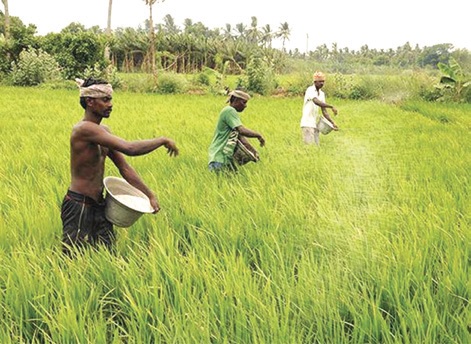Global agriculture is facing new challenges, in terms of climate change, unstable food prices and labour shortage, amid conflicting demand for arable land for producing more food, animal feed and bio-fuel, which limit the effectiveness of a purely production-focused strategy. The critical policy imperatives of the day are how to feed a rising global population with shrinking resources such as land, water and labour, and how to increase farmers’ income, a goal that sometimes may conflict with producing more.
The Food and Agriculture Organisation (FAO) estimates that globally one third of all food produced is wasted from farm to fork. Food loss and waste is responsible for 8% of global greenhouse gas emissions — six times more than the global aviation sector. While one in nine people remains malnourished worldwide, we use land equal to the size of China to grow food that is lost or thrown away. At $940 billion annually, food loss and waste is more than the entire GDP of Indonesia. In reality, we already produce enough food to feed 10 billion people, the projected population by 2050. The World Bank estimates that a reduction in post-harvest loss of just 1% could lead to output gains of $40 million every year. It is also relatively more costeffective to preserve food than to produce more. However, only 4% of the total investments in global food and agriculture goes toward reducing food loss. This apathy could be due to a lack of standardised and accurate measurement and visible impact of food loss and waste.In developing countries like India, over two-thirds of food loss happens pre-harvest in the field or in the post harvest supply chain. About $15 billion worth of harvest is lost in India. Six crops — rice, wheat, banana, tomato, onion and potato — comprise around 40% of the overall food loss. India is one of the top global production hubs. But traditionally, it is small holder-dominated and infrastructure starved. Unless addressed seriously, increasing urbanisation will further increase food miles. And rising protein intake in diet, including dairy, fresh fruit, vegetable and meat, will require greater care in handling and logistics. An integrated cold chain is believed to be the most obvious solution for reducing post-harvest perishable food loss. While in the US, over 70% of perishable food gets refrigerated, in India, it’s less than 4%. Ironically, India has the largest capacity of refrigerated warehouses in the world at 130 million cu m, 60% of which is concentrated in two states, Uttar Pradesh and Bengal, and over 75% used for potato alone. But to keep the integrity of the cold chain from farm to fork, India also needs near-farm pack-houses for onward transport and refrigerated vehicles. According to a recent study by the National Centre for Cold Chain Development (NCCD), India needs about 70,000 pack-houses, while currently there are only about 250. India has less than 10,000 refrigerated vehicles, while the need is estimated at 62,000. Ministry of food processing industries’ proposed new scheme for supporting investments in ‘forward and backward linkages’ to address these gaps is a move in the right direction. Agriculture marketing policy also needs to be further reformed uniformly across states. Farmers should not only be allowed, but also encouraged, to access direct linkages with private sector exporters, processors and retailers, thus creating a more integrated ‘food system’. This will result in more demand-based production and a better economic case for co-investing for reduced food loss. Allowing large-scale modern commercial agriculture through leasing of land could attract suitable investments for reducing food losses. Organising farmers and connecting them to markets is another step towards this supply chain integration. Connecting R&D to the field and building capacity for farmer training and advisory are also essential. India could leapfrog the cold chain revolution by adopting solar and other renewable energy technologies. Precision agriculture with satellite imaging-based analytics could also help in early detection of pests and waste. Consumer groups could be identified who are willing to pay a premium for quality and sustainability. Urban consumers could be sensitised about the impact of food loss through large-scale information campaigns. ‘Zero waste’ or ‘premium quality’ branding might help pay for refrigerated storage and logistics. Other initiatives could include financial incentives to supply chain partners for adoption of food loss reduction practices. Finally, wasted food material could be recycled to produce biofertilisers or packaging material, which can help enhance shelf life. There are a number of innovative technologies already available worldwide that can be scaled up through public-private partnerships.
(Source: The Economic Times blogs, July 10, 2017)
Disclaimer: The information provided within this publication / eBook/ content is for general informational purposes only. While we try to keep the information up-to-date and correct, there are no representations or warranties, express or implied, about the completeness, accuracy, reliability, suitability or availability with respect to the information, products, services, or related graphics contained in this publication / eBook/ content for any purpose. Any use of this information is at your own risk.
 Youth
Youth
 Women
Women
 Research for Ishrae
Research for Ishrae







